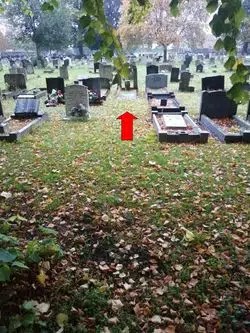b. 15/07/1881 Newark, Nottinghamshire. d. ? 1965 Newark, Nottinghamshire.
DATE OF EM ACTION: 03/10/1927 Nottingham.
Frank was the third of six children born to Guy and Mary Elizabeth Boot, and grew up in the Balderton District of Newark. His siblings were Elizabeth Sarah, John William, Ada, Walter and Harold Wilson. Harold Wilson Boot, the youngest of the Boot children was born when his mother was 51 and his father was 59. Frank was 18 when his youngest brother was born. By 1939 he was married to Esther and lived in Newark, still working for the Quibell Brotherss Ltd.
EM CITATION:
On the night of the 3rd October 1927 a man named Taylor was engaged in attending, at the works of Messrs. Quibell Brothers Limited, a grease extracting plant used for extracting grease from bones by means of petroleum benzine. Noticing that benzine vapour was escaping from the extractor through the lid which had been incorrectly left open he endeavoured, with the help of a fellow workman, to close the lid. The follow workman was affected by the fumes and on the suggestion of Taylor left the room. On recovering and finding later that Taylor had not followed him he gave the alarm. William Lloyd, a sub-foreman of the works, who was not on duty but was passing the works on his way home, hearing that Taylor was in the building, put a scarf round his month and ran to the upper floor of the building where he found Taylor lying unconscious near the lid of the extractor. He succeeded in dragging Taylor down three steps to a lower floor but was himself overcome, ‘and collapsed, and was later taken out of the building by other men. Frank Boot, the foreman of the works, who was not on duty but had been summoned from his home, meanwhile arrived at the works, and having put a handkerchief round his mouth went into the building where he found Taylor in the position in which Lloyd had left him. Boot then dragged Taylor to a point where other men could reach him, but he himself became affected with the fumes. Lloyd and Boot in rescuing Taylor, displayed a high degree of courage. It was stated in evidence at the inquest on Taylor, who did not survive, that at the time of the rescue the building was full of benzine fumes and that a cloud of fume was also visible outside the building. Apart from the risk of suffocation there was the exceptionally serious risk of an explosion, and both men were well aware of these risks. The Coroner and the Jury spoke in the highest terms of the bravery shown by Lloyd and Boot and asked that it should be recognised.
BURIAL LOCATION: NEWARK UPON TRENT CEMETERY, NEWARK UPON TRENT, NOTTINGHAMSHIRE
PLOT 363B (UNMARKED).
LOCATION OF MEDAL: UNKNOWN.


